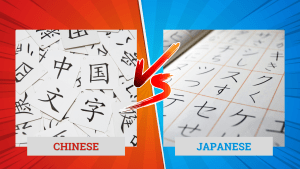“Hello” is a universal icebreaker that can create connections, open doors, and bridge cultural divides. From bustling Tokyo markets to remote Arctic settlements, all 7,000+ languages spoken worldwide offer their own special charm. Learning how to say “hello” in another language isn’t just polite; it’s a ticket to deep connections.
But let’s skip the boring phrasebook vibes. Below, you’ll find over 60 ways to say “hello” in different languages, along with pronunciation hacks (no linguistics degree required) and cultural tips to avoid missteps.
How to Say “Hello” Around the World
| Language | Greeting | Pronunciation | Regions Spoken |
| Afrikaans | Hallo | HAH-low | South Africa, Namibia |
| Albanian | Përshëndetje | per-shen-DEH-tyeh | Albania, Kosovo |
| Amharic | ሰላም (Selam) | seh-LAHM | Ethiopia |
| Arabic | مرحبا (Marhaba) | mar-HAH-bah | Middle East, North Africa |
| Armenian | Բարեւ (Barev) | bah-REV | Armenia, Nagorno-Karabakh |
| Azerbaijani | Salam | sah-LAHM | Azerbaijan, Iran |
| Basque | Kaixo | kai-SHO | Basque Country (Spain/France) |
| Belarusian | Вітаю (Vitaju) | vee-TAH-yoo | Belarus |
| Bengali | হ্যালো (Hyālō) | heh-LOH | Bangladesh, India |
| Bosnian | Zdravo | ZDRAH-voh | Bosnia and Herzegovina |
| Bulgarian | Здравейте | zdrah-VEY-teh | Bulgaria |
| Burmese | မင်္ဂလာပါ | min-gah-lah-BAH | Myanmar |
| Catalan | Hola | OH-lah | Catalonia (Spain), Andorra |
| Cebuano | Kumusta | koo-MOOS-tah | Philippines |
| Chichewa | Moni | MOH-nee | Malawi, Zambia |
| Chinese (Mandarin) | 你好 (Nǐ hǎo) | nee-HOW | China, Singapore, Malaysia |
| Croatian | Bok | BOK | Croatia |
| Czech | Ahoj | ah-HOY | Czech Republic |
| Danish | Hej | HI | Denmark |
| Dutch | Hallo | hah-LOH | Netherlands, Belgium |
| Estonian | Tere | TEH-reh | Estonia |
| Filipino (Tagalog) | Kumusta | kah-moo-STAH | Philippines |
| Finnish | Hei | HAY | Finland |
| French | Bonjour | bohn-ZHOOR | France, Canada, Belgium |
| Galician | Ola | OH-lah | Galicia (Spain) |
| Georgian | გამარჯობა (Gamardjoba) | gah-mar-JO-bah | Georgia |
| German | Hallo | HAH-loh | Germany, Austria, Switzerland |
| Greek | Γεια σας (Yia sas) | yah SAHS | Greece, Cyprus |
| Gujarati | નમસ્તે (Namaste) | nuh-MUS-tay | India, Pakistan |
| Hausa | Sannu | SAN-noo | Nigeria, Niger |
| Hawaiian | Aloha | ah-LOH-hah | Hawaii (USA) |
| Hebrew | שלום (Shalom) | shah-LOHM | Israel |
| Hindi | नमस्ते (Namaste) | nuh-MUS-tay | India, Nepal |
| Hungarian | Helló | HEL-loh | Hungary |
| Icelandic | Halló | HAH-loh | Iceland |
| Igbo | Ndewo | n-DEH-woh | Nigeria |
| Inuktitut | ᐊᐃᓐᖓᐃ (Ainngai) | EYE-ngai | Canada (Arctic) |
| Indonesian | Halo | HAH-loh | Indonesia |
| Irish | Dia dhuit | DEE-ah gwit | Ireland |
| Italian | Ciao | CHOW | Italy, Switzerland |
| Japanese | こんにちは (Konnichiwa) | kon-nee-chee-WAH | Japan |
| Javanese | Halo | HAH-loh | Indonesia |
| Kannada | ನಮಸ್ಕಾರ (Namaskāra) | nuh-mus-KAH-ruh | India |
| Kazakh | Сәлеметсіз бе (Sälemetsiz be) | suh-lem-met-SIZ beh | Kazakhstan |
| Khmer | ជំរាបសួរ (Choum reap sour) | jom-REAP soo-uh | Cambodia |
| Korean | 안녕하세요 (Annyeonghaseyo) | ahn-nyong-ha-SEH-yo | South Korea, North Korea |
| Kurdish | Silav | see-LAHV | Kurdistan regions |
| Lao | ສະບາຍດີ (Sabaidee) | sah-bai-DEE | Laos |
| Latvian | Sveiki | SVAY-kee | Latvia |
| Lithuanian | Labas | LAH-bahs | Lithuania |
| Macedonian | Здраво (Zdravo) | ZDRAH-voh | North Macedonia |
| Malay | Selamat pagi | seh-LAH-mat PAH-gee | Malaysia, Singapore |
| Maori | Kia ora | KEE-ah OR-ah | New Zealand |
| Polish | Cześć | chesh-ch | Poland |
| Portuguese | Olá | oh-LAH | Portugal, Brazil |
| Russian | Здравствуйте (Zdravstvuyte) | ZDRAST-vooy-tyeh | Russia |
| Slovak | Ahoj | AH-hoy | Slovakia |
| Spanish | Hola | OH-lah | Spain, Latin America |
| Swahili | Habari | hah-BAH-ree | East Africa |
| Swedish | Hej | HEY | Sweden |
| Tamil | வணக்கம் (Vanakkam) | vuh-NAH-kum | India, Sri Lanka |
| Thai | สวัสดี (Sawasdee) | sah-wah-DEE | Thailand |
| Turkish | Merhaba | mehr-hah-BAH | Turkey |
| Ukrainian | Добрий день (Dobryi den) | DOH-bree den | Ukraine |
| Vietnamese | Xin chào | sin CHOW | Vietnam |
| Welsh | Helo | HEH-loh | Wales |
| Zulu | Sawubona | sah-woo-BOH-nah | South Africa |
Note: Pronunciations is approximate and may differ based on regional accents and dialects.
Cultural Considerations When Saying “Hello” in Different Languages
A greeting embodies more than words alone – it also conveys cultural values and social norms, so understanding them will help prevent potential missteps while showing appropriate courtesy and respect.
Body Language Matters
Different cultures have different expectations for the physical aspects of greetings:
- Japan: When greeting someone, pairing their greeting with a bow demonstrates your level of respect. The lower your bow, the more reverence is being shown.
- France: When greeting friends verbally, a light kiss on each cheek (la bise) is often exchanged as part of a greeting ritual. The number of kisses typically varies by region – usually anywhere from one to four alternating cheeks.
- India: When saying “Namaste,” press your palms together at chest level while making eye contact with elders as a sign of respect.
- Thailand: The traditional “wai” greeting involves a slight bow with palms pressed together in a prayer-like gesture. The height of your hands indicates the level of respect – higher hands show greater deference.
Formality vs. Informality
Many languages distinguish formal/informal greetings depending upon interactional situations:
- Korean: When greeting strangers, elders or professionals; formal addresses should include “Annyeonghaseyo”. Informal greetings such as “Annyeong” should only be used with friends and peers.
- German: “Hallo” is casual; “Guten Tag” (Good day) is more formal and appropriate in business settings or with strangers.
Timing and Context
Many greetings change based on the time of day or specific context:
- Japanese: There are various greetings depending on the time and formality level: “Ohayo gozaimasu” (good morning), “Konnichiwa” (good day), and “Konbanwa” (good evening).
- Malay: Saying, “Selamat pagi” means good morning; adjust as necessary throughout the day to “Selamat petang” (good afternoon) or “Selamat malam” (good evening).
- Arabic: “Marhaba” is casual; “As-salamu alaykum” (peace be upon you) carries religious significance and is widely used throughout Muslim cultures.
- Spanish: “Buenos días” (good morning), “Buenas tardes” (good afternoon), and “Buenas noches” (good evening) are used at different times of the day.
Gestures to Avoid
- Thailand: Never touch someone’s head – it’s considered sacred.
- Middle East: Avoid using your left hand for handshakes.
Local Nuances
Small details can make an enormous impactful statement:
- Nigeria: When greeting Hausa culture people with “Sannu,” part of their greeting ritual involves asking “Ina kwana? (How did you sleep?) as part of their greeting ritual.
- Hawaii: Aloha symbolizes love, peace and respect – use it with genuine warmth rather than as an empty greeting!
- Canada: Canadian greetings vary depending on the region – English-speaking areas tend to use “Hello” with a handshake, while Quebec prefers French-based “Bonjour” greetings with cheek kisses.
Conclusion
Mastering greetings in different languages is like holding a key to the world. Whether you say “Bonjour” in Paris, “Namaste” in Delhi, or “Sawubona” in South Africa, your efforts to connect culturally will always be appreciated. These small linguistic gestures build bridges between cultures and show respect for diversity.
So before your next trip or international meeting, take a few minutes to learn the appropriate greeting. This simple word could be the start of an extraordinary connection.
Need more than greetings? Our professional translation services ensure accuracy in 250+ language combinations. Contact our experts today to learn more about our solutions.





